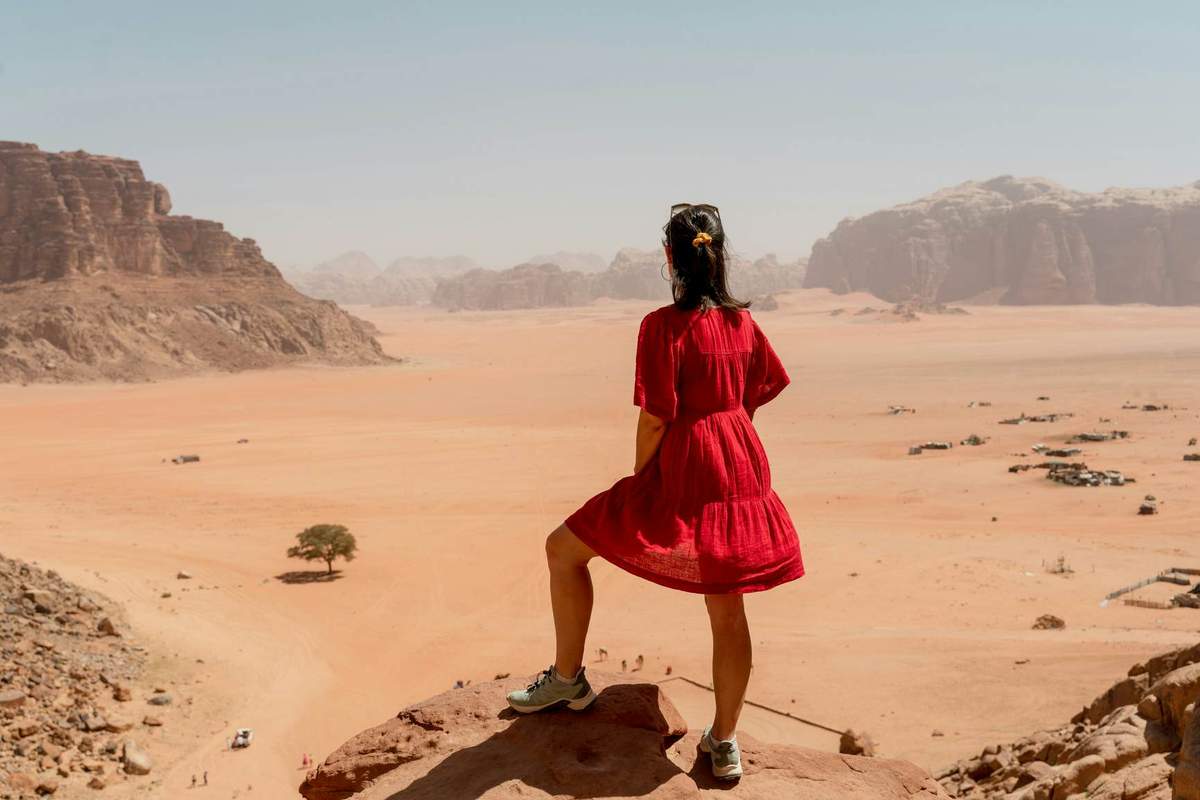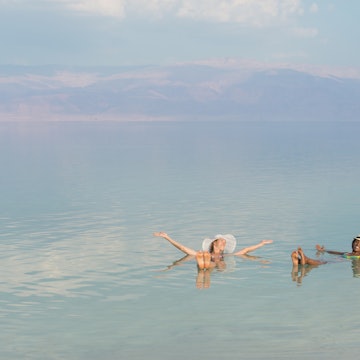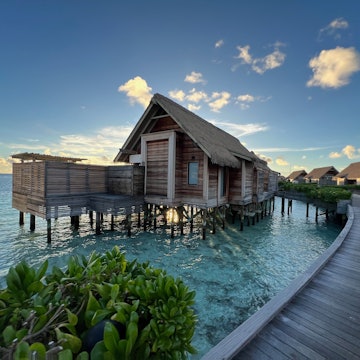

Aqaba, Jordan. byvalet/Shutterstock
“Welcome to Jordan!” cries a smiling market seller as he hands over a bundle of yellow barhi dates to a passerby. I smile and say, "Shukran, thank you, for the warm greeting," while I also say, "Shukran," to the local cat who accommodates my petting for minutes on end. This is Jordan - a country of never-ending welcomes, excellent hospitality and delicious food which you could indulge in for hours (partly because the portions just keep on coming). I last came to Jordan in 2020 (before you know what) with a friend who was vegetarian at the time. I was left to delve into a huge plate of maqluba, a dish of chicken, rice and vegetables, all by myself (not that I was complaining, I relished the challenge). Five years on, I came back to Jordan excited to return and visit corners of the country I hadn’t previously. The delights of Petra and Wadi Rum still thrilled me; that won’t ever change, and rightly so. And just as before, one dish kept coming after another, and another. But this time, I shared the chicken with my fellow meat-eating travelers.
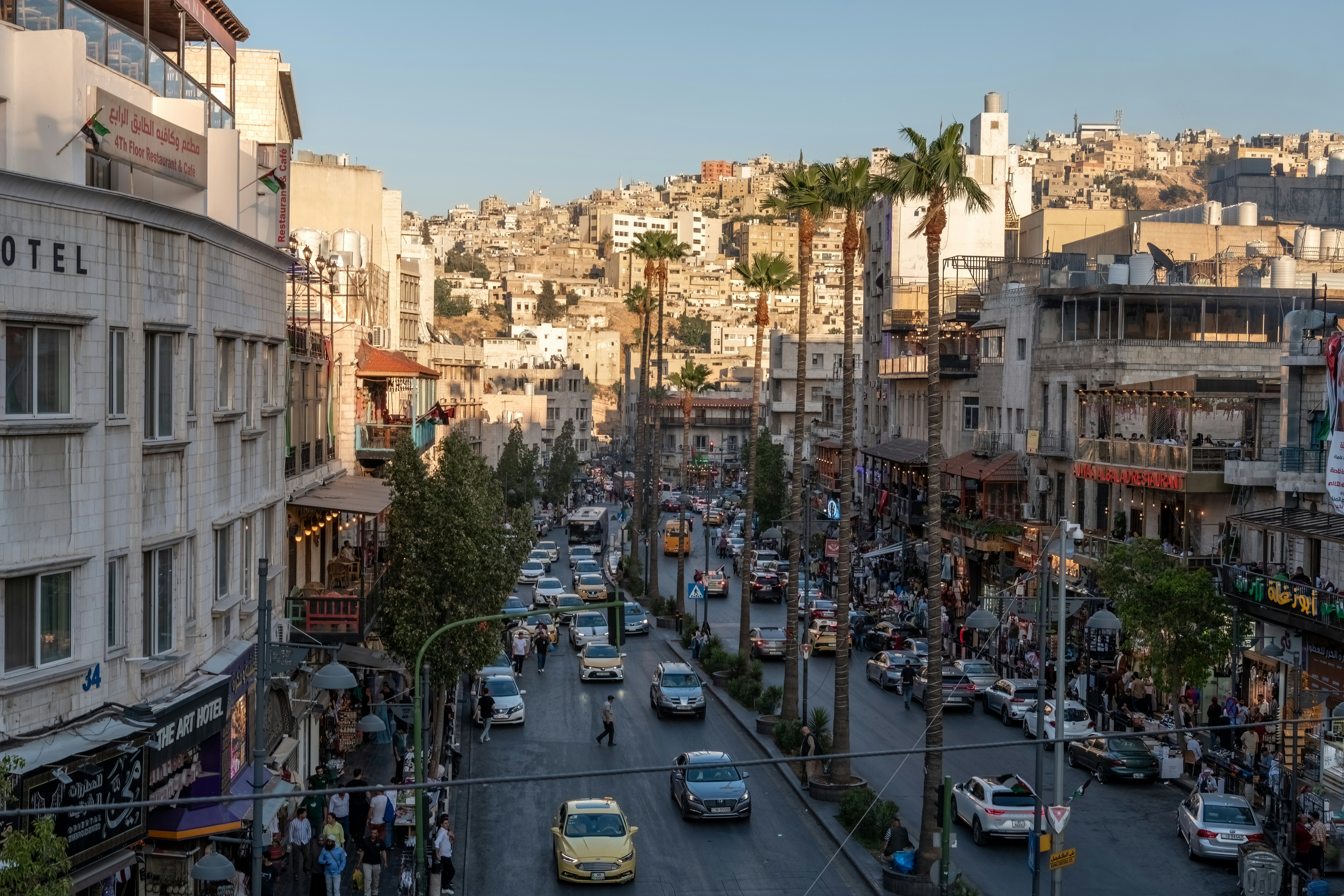
When to arrive: For a first-time visit to Jordan, five days is the optimum amount of time. Start on a Monday, and if time allows, or you’re looking for a more relaxed pace, add on extra days.
How to get from the airport: From the airport in Amman, for example, grab a taxi from the airport into the city center from outside the arrivals terminal. Keep an eye out for official taxi kiosks. Cash is handy just in case you can’t pay by card. Alternatively, use Uber or Careem (a Dubai-based ride hailing app) to book a ride. Look out for shuttle buses too, the capital offers ones from the airport to the center which departs every 30 minutes.
Getting around Jordan: Hire a car for complete ease. JETT buses are also a common budget option and cover many of the popular tourist routes.
Where to stay: There are some excellent accommodation options throughout Jordan. In Amman, for an excellent luxury stay head to the Four Seasons. The Dead Sea area is dotted with high-end hotels. The Dead Sea Marriott Resort & Spa has an optimum location and a good food buffet. Stay overnight in the Dead Sea as it makes accessing the salty water much easier than on a day trip. In Wadi Rum, Sun City Camps offer comfortable glamping-style bubble tents. Some tents come with their own porch, perfect for even more stargazing.
What to pack: Loose clothing is best; temperatures can be warm and the sun can be harsh. Wear modest clothing which covers your shoulders and knees for when visiting mosques and other religious sites. A scarf is always handy. It can cover your face against the sand and wind in Wadi Rum if you are driving in a 4x4 vehicle and can also be used as a head covering for women when entering a mosque. Layers are key. Petra, and particularly Wadi Rum, can be chilly in the morning and evening. Pack sturdy and comfortable footwear, you’ll be doing lots of walking.
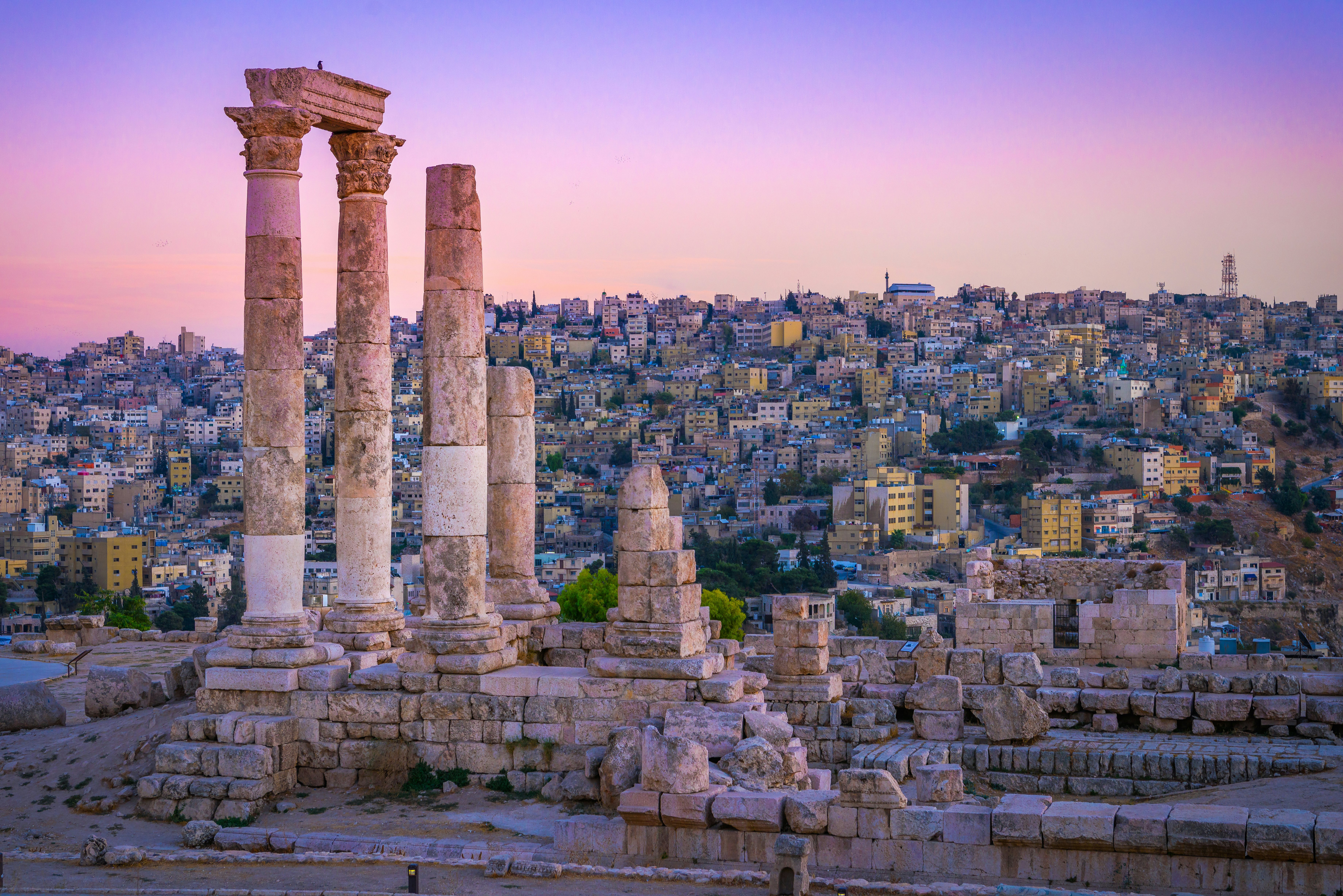
Day 1
How to spend the day
The heart of Amman is its downtown area. Head here to see one of the city’s highlights: the Roman Theatre. The theatre was likely built during the reign of Antoninus Pius (138-61 AD). You will see that there are three tiers to the structure. The rulers sat closest to the bottom to get the best views, the military would sit in the middle and the public would sit on the top rows. The monument has a seating capacity of 6000 and is still in use today. The space sometimes hosts concerts, check with your hotel if any are organised for when you’re here. For a workout on your thighs, you can stride all the way to the top of the theatre and look out to sprawling views of Amman.
Spot the Citadel in the distance too, which will be your next stop on the itinerary. The Citadel area is perched on the highest of seven hills in Amman, Jebel Al Qala’a. With that comes impressive panoramic views of the city. Spot the Roman Theatre in the distance. Its most impressive features are the Roman Temple of Hercules (known for its columns and Hercules giant stone hand), the Umayyad Palace and a Byzantine Church. On street level, whilst walking through Amman, you’ll likely see some impressive street art, such as The Column, which displays a man carrying part of a Nabatean column from Petra. Head to Darat al-Funun, translated as House of the Arts, which is a contemporary art center and holds various exhibitions. They also hold talks and screen films here. End your day with a visit to Rainbow Street, where you can find a collection of bars and restaurants to while the evening away in.
Dinner
Fakhreldin serves exceptional Levantine cuisine. The hummus is delightful, as is the chicken liver with pomegranate juice and red pepper.
Extra time?
Have an afternoon in Jerash, one of the best-preserved Roman cities on the planet. It features a theater, colonnaded streets and temples. The Jerash Festival of Culture & Arts takes place in the summer with concerts and plays. Check the website for the most-up-to date event dates.
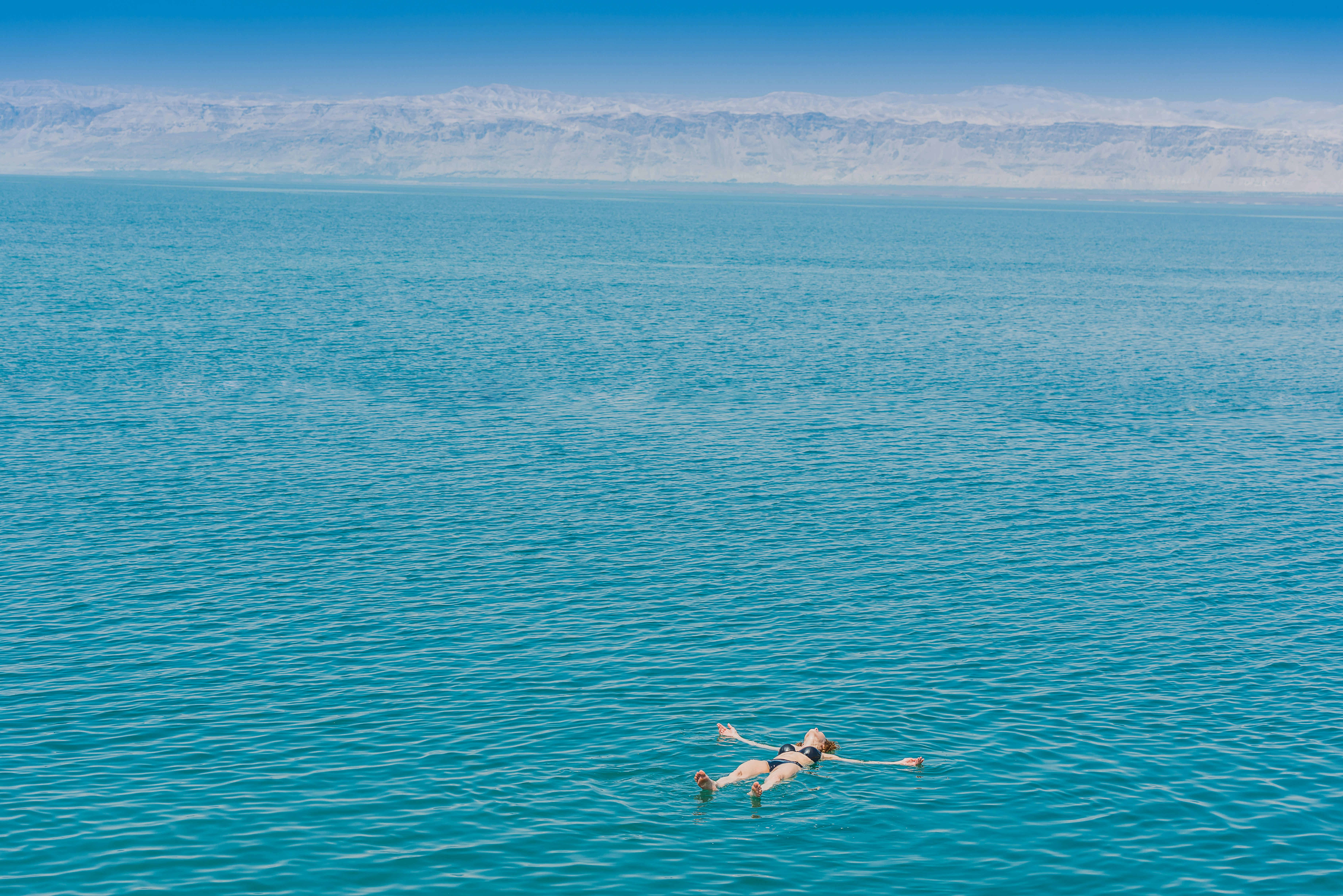
Day 2
How to spend the day
Drive or hop on a JETT bus (around one to one and half hours) to the Dead Sea. The Dead Sea is located 427m above sea level and is close to 10 times saltier than standard seawater, which will leave you bobbing away, and is said to help various skin conditions such as psoriasis and eczema. There are many hotels which line the Dead Sea Highway which allow access into the water. Some hotels, such as the Dead Sea Marriott Resort & Spa can provide you with a natural mud mask to apply to your body when in the water. Cover up any cuts on your skin with a plaster before heading into the water - trust us.
Dinner
After all that relaxing, you likely won’t want to venture far. Hotels in the Dead Sea area offer many dining options, such as Mövenpick Resort & Spa Dead Sea.
Extra time?
Head to Bethany Beyond the Jordan (around a 15-20 minute drive from the Dead Sea), which is where Jesus is believed to have been baptised by John the Baptist. It’s also believed that is the spot where Elijah ascended into heaven.

Day 3
How to spend the day
Hire a private car or join a tour to Petra which is about three or four hours away from the Dead Sea. No visit to Jordan is complete without seeing Petra, one of the New Seven Wonders of the World. An ancient archaeological city, Petra was founded by the Nabataeans more than 2000 years ago. A city of grand superlatives, most majestic may just top the list. You’ll find yourself in awe of the sandstone rock structures and be pointing out intricate details you’ll find within the rocks throughout your time here. Whether it’s a striking column or the shape of a camel, Petra is simply magnificent. It’s also the soft light and colors of Petra that allure visitors to what is called the Rose City. Come at sunrise or sunset and the rose-red sandstone is intensified. Start your day by heading to the Petra Visitor Centre where the Main Trail begins, the most popular route in Petra. Licensed tour guides are available if you wish to learn more about Petra if you haven’t booked onto a group tour. The trail is easily done on your own, too. Along the way, you’ll see Djinn block tombs, the Obelisk Tomb and an ancient dam.
Carry on and you’ll find one of the top highlights of the walk, the legendary Siq. The Siq is a narrow gauge which leads to the main entrance into Petra, creating a wandering sense of anticipation as you step closer and closer. At the end, you’ll find the stunning Al Khazna, the Treasury, which you will likely already recognize, it is likely to be the most photographed part of Petra. Carry on and you’ll find the Street of Facades, Theatre and the Colonnaded Street. The trail ends at Qasr al Bint. After your walk, head to the Petra Museum which holds a grand selection of artifacts, animations and reconstruction models of the city. You can also learn more about the people who lived in Petra. If you are here on a Monday, Wednesday or Thursday, make sure to get a ticket for Petra By Night. You walk through the Siq again and reach the end, the Treasury, for an evening of storytelling, music, light projections and Bedouin tea, all by candlelight. For me, Petra By Night is one of those travel moments that stick with you long after you’ve left the country: it’s where you appreciate the quiet and the grandeur of your surroundings even more.
Dinner
Jordan Heritage Restaurant serves up Jordan’s national dish, mansaf, rice, lamb and jameed, a fermented dried yoghurt sauce and samneh, clarified butter and nuts. Its long menu of other treats will tell you where each dish originated from in the country. Jordan Heritage has also been a non-profit organization since 2014 and one of its aims is to support women’s rights. The Jordan Heritage Restaurant sources all of its key ingredients from women-owned, home-based businesses from around the country.
Where to stay
Petra Guesthouse is a top location, situated at the entrance to the ancient city.
Extra time?
Petra is not a place to be rushed. If you have some flexibility with your schedule, we recommend adding on at least one other day to explore more of Petra, such as Little Petra, the Royal Tombs and the Monastery. There are wonderful hikes around the area too such as to the High Place of Sacrifice which are to be enjoyed at a leisurely pace.

Day 4
How to spend the day
Take a JETT bus from Petra to Wadi Rum: one of the most incredible landscapes you’ll experience in Jordan. Vast layers of sand and jagged mountain structures, there really is nothing else quite like it. Stay overnight in Wadi Rum and enquire at your accommodation about 4x4 tours to see some of the unique rock formations up close. Look out for gigantic rock formations such as Jebel Rum and Umm Fruth Bridge. Certain camps such as Sun City Camps also offer other must-do experiences, such as stargazing whilst enjoying tea and Bedouin music.
Dinner
You’re stuck in the desert, my friend. Eat dinner at your accommodation, which will put on quite a spread. Enjoy zarb if you can, an underground dish of chicken or lamb, prepared Bedouin style.
Day 5
How to spend the day
About an hour's drive from Wadi Rum lies Aqaba. Located on the Red Sea coast, Aqaba’s waterside spot boasts relaxed and chilled vibes aplenty. Water sports such as snorkelling and diving are incredibly popular in the area, with soothing warm waters and good visibility the majority of the time. If you’re not dipping in the water yourself, glass-bottom boat tours are popular where you can see marine life and coral reefs beneath you. With all this, comes fabulous seafood. Try sayadieh, a rice and fish dish, a speciality in Aqaba. After all that relaxing and eating, head to the Corniche for a waterside stroll. Nearby, you will find the towering flagpole, so grand, it’s the sixth tallest one on the planet, Aqaba Museum which showcases finds from the area such as glazed ceramics and Aqaba Castle, which played a significant role in overcoming the Ottoman Empire. Remember that the city is tax free, so enjoy some last-minute souvenir shopping before you head home. My suitcase was full with za’atar and barhi dates.
Dinner
Mirwas Cafe & Restaurant offers wonderful views of the water with a divine crab salad.
Where to stay
The InterContinental Aqaba offers great service and live music nights.
Zara Sekhavati traveled to Jordan with the support of The Jordan Tourism Board. Lonely Planet staff do not accept freebies in exchange for positive coverage.






